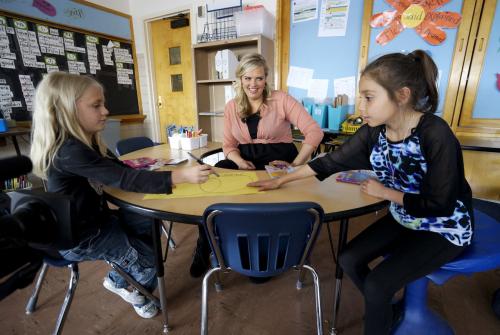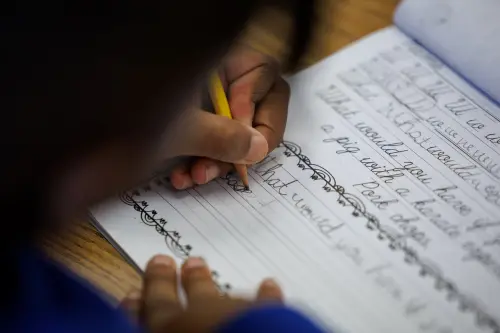The supply and demand sides for U.S. educational technology deserve closer scrutiny in light of the release of the 2016 National Education Technology Plan by the Department of Education. That plan, the fifth in a series, was preceded by the Federal Communication Commission’s (FCC) 2014 comprehensive reform of its E-rate program. The revamped E-rate program, the largest federal effort focusing on educational technology, went beyond the original goal established for basic Internet connectivity to schools, replacing it with a new benchmark—a short term target of 100 Mbps per 1,000 students, and a longer term target of 1 Gbps per 1,000 students. Re-purposed funding for wi-fi and robust broadband connections capable of supporting cutting-edge, one-to-one digital learning also were part of this major reform effort.
According to FCC Chairman Tom Wheeler, “[t]he bottom line is that E-rate is devoting its resources to where schools and libraries need the most help: getting access to robust broadband. This will open up new educational opportunities for students across the country.”
In large part, this FCC initiative has been successful in enabling more schools to have adequate broadband connectivity, albeit still below the aspirational speed benchmarks that the agency established. But the intensity of demand, combined with dwindling school budgets, still leaves a substantial digital divide between the “haves” and “have nots” among public schools. According to the broadband advocacy group Education Superhighway, 21 million students and nearly a quarter of all school districts are not meeting minimal bandwidth goals for digital learning. In other words, the digital divide in K-12 educational institutions remains a persistent reality.
The latest National Educational Technology Plan adds a new level of analysis to the policy discussion regarding how to fill the gaps between broadband network supply and demand. It underscores another critical variable in the equation that must be developed to provide the digital momentum that is a vital aspect of 21st century education.
In effect, the plan moves beyond the usual digital divide perspective to emphasize that there is a larger gap that needs to be filled—namely, a “digital-use divide.” This represents the substantial separation between active and passive uses of digital and online content and tools in the classroom. The emphasis on digital learning needs to be shifted from how much broadband is available to how well broadband networks and apps are actually utilized in schools.
The Department of Education thinks that greater emphasis needs to be placed on more “active” uses of educational technology, such as coding, creative media production, design and collaboration with experts. Improving teacher training and professional development is an integral part of closing the digital-use divide, as well.
Taken together, E-Rate and the National Education Technology Plan can do much to advance the need for better digital learning capabilities. The next step should be a more coordinated federal effort that joins both of them at the hip rather than letting both continue along parallel tracks. In the end, supply and demand is not just a matter of how many high-speed broadband network nodes are in place. The qualitative aspect of how the technology is employed deserves equal if not greater emphasis this year.
The Brookings Institution is committed to quality, independence, and impact.
We are supported by a diverse array of funders. In line with our values and policies, each Brookings publication represents the sole views of its author(s).



Commentary
The real digital divide in educational technology
January 28, 2016